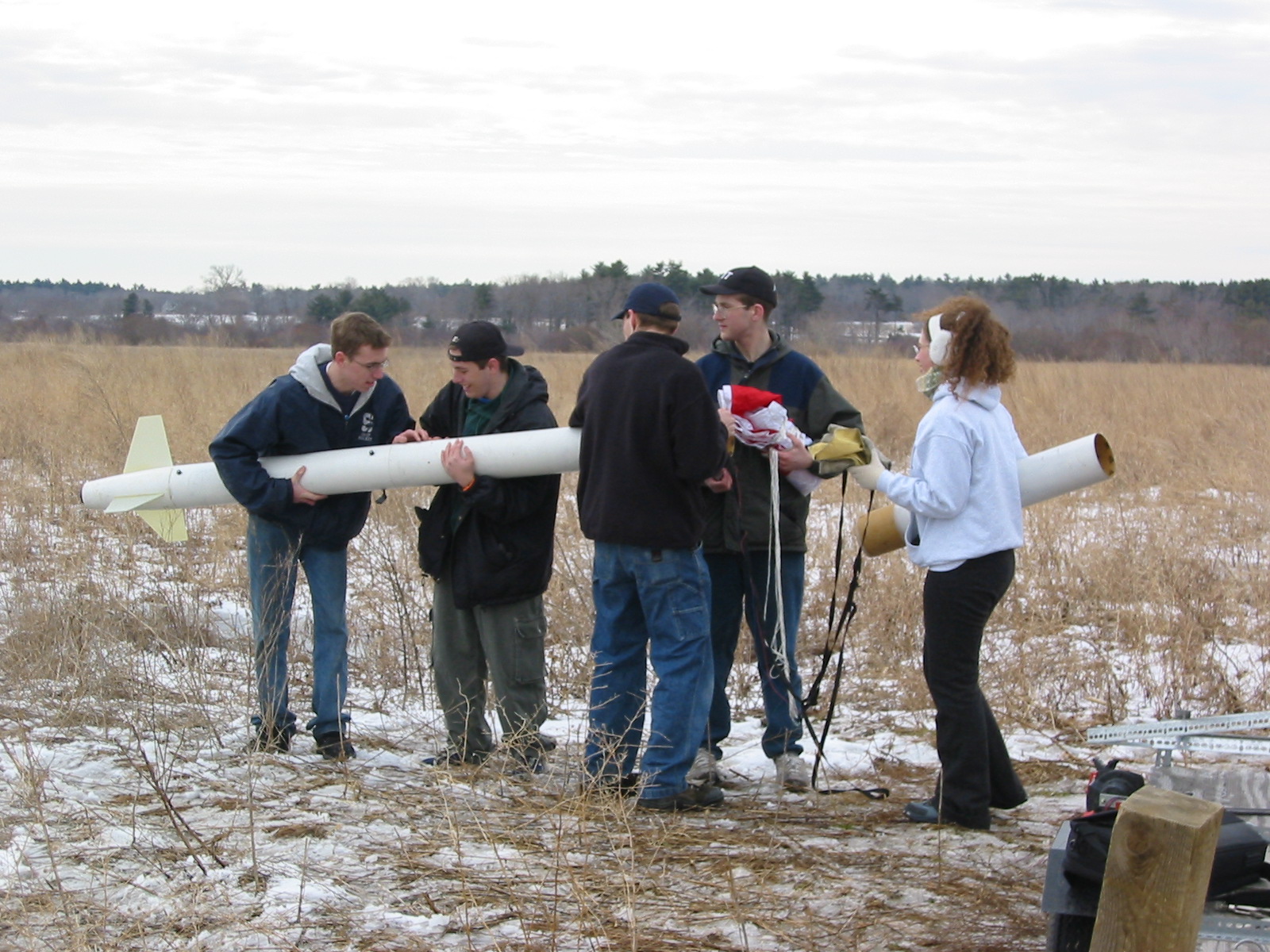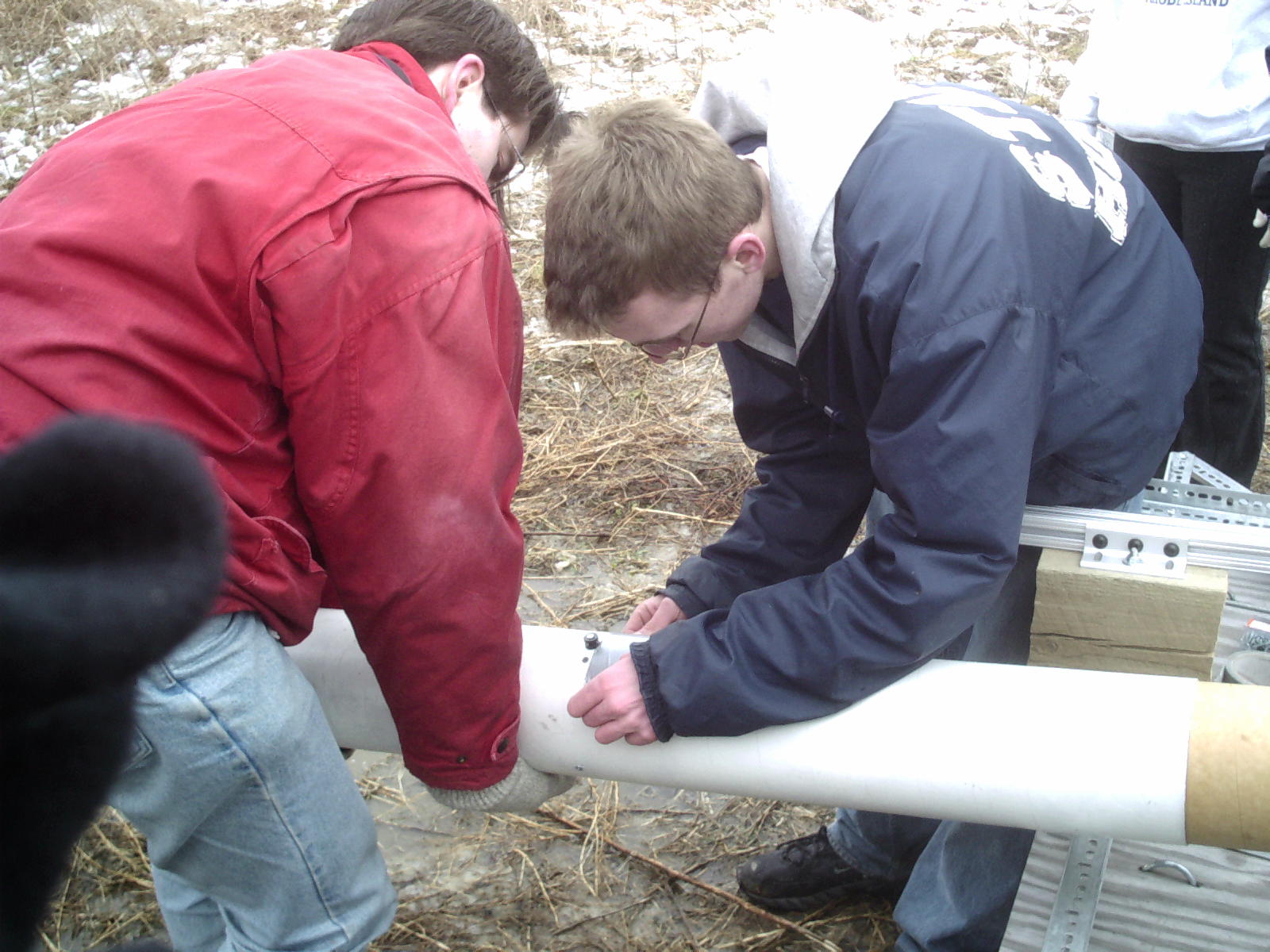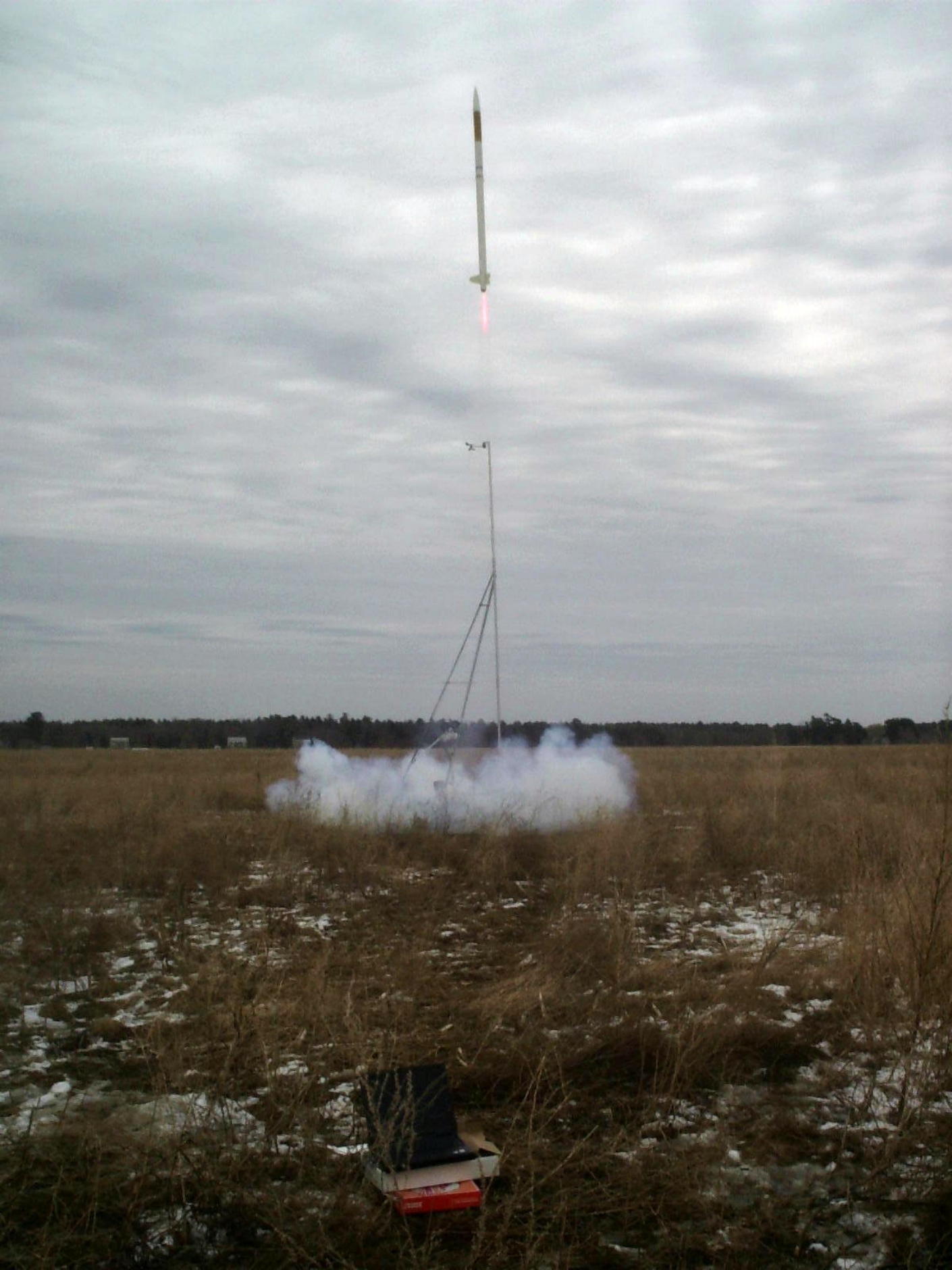 LUNAR’clips
2003
Volume 10, Number 2
LUNAR’clips
2003
Volume 10, Number 2
 LUNAR’clips
2003
Volume 10, Number 2
LUNAR’clips
2003
Volume 10, Number 2
Livermore Unit of the National Association of Rocketry March/April 2003
Copyright © 2003 by LUNAR, All rights reserved.
Adventures of the MIT Rocket TeamBy Tofer Pentacoff | 
|
What better place is there to play around with rockets than at the Massachusetts Institute of Technology? Being a member of the MIT Rocket Team, I can say I've certainly had a great time designing and building stuff. Sometimes we test liquid rocket engines, or blow stuff up (accidentally… usually), or make liquid N2 ice cream, or more recently, launch high power rockets.

Our 14 foot tall rocket is meant to be a test vehicle for when we finally get our liquid engine operational and actually make a rocket of the same specifications to send a several kilogram payload into space. The team was initially inspired by the Cheap Access to Space prize, which has now expired with no winner. For now we are using a newly constructed massive 24 foot rail launcher that I designed and built much of to launch the rocket. At the very top is a weather station hooked to a laptop via cable where we can monitor how much our rocket tips compared with the wind speed as it leaves the rail.

More than a dozen of us arrived at the launch site at around 10:30 after an hours drive to find that the highway had claimed half of our rail connection pieces; we then had to improvise a way of putting the rails together. We then prepped our experimental engine, which was mixed last summer by some students. The power was roughly equivalent to that of a J engine (even then our rocket was severely underpowered).
While getting our rocket ready, there were other interesting things going on; a long (30 sec) static test of an engine was performed, and this really interesting rocket shaped like a spool was launched (and flew quite stably to my surprise). It seemed that they had their share of mishaps too; it didn't take much to find charred concrete or a blown apart piston lying on the ground.
While raising the rocket on the launcher, the rail flexed and ripped one of the buttons holding the rocket clean through the bulkhead. Now we were stuck with a one and a half inch diameter hole in our rocket that was right next to our ejection charge. Of course there was the obvious solution to this of which several team members proposed simultaneously: duct tape!

After applying a duct tape bandage and screwing the button back in we were ready. Nevertheless the entire procedure of raising the rocket was lengthy. For a while we had the rail resting with the rocket on it pointed at a suspiciously ballistic angle directly at a group of houses downrange; we wondered if the people knew what we were doing… The day was definitely filled with experience in engineering on the fly.

Finally, we were ready for launch. At 13:55 PST on March 15, 2003 the 14 foot tall rocket lifted off the launch rail smoothly. The rocket coasted to about 500 or 600 feet in a few seconds and deployed its drogue chute right at apogee. A perfect flight… until ejection that is. The bulkhead became separated from the main body; apparently the force of ejection was strong enough to rip 3 screws completely out of the plywood. Since there was no drogue chute attached to the main body, there wasn't enough force to pull out the main chute, and it crashed head-on into the ground. Luckily the expensive parts were recovered with no damage, but the rocket itself was effectively destroyed.

As far as video from the rocket, we got very little, likely due to a power problem in the transmitter. As for video from the ground, we got many different angles, each of which have a different audio as people yelled at the rocket in various ways.
After throttling a minivan through foot-deep puddles mud to leave the launch site, we returned to MIT with smiles on our faces despite the fate of the rocket. We'll certainly be flying again once we get the rocket rebuilt this summer. And someday, we'll make it into space.
For more information or pictures about the MIT Rocket Team go to http://web.mit.edu/cats

The MIT Rocket Team.
All content is the responsibility of LUNAR.
If you have comments or suggestions regarding these web pages,
please contact the 
Copyright © 1992 - 2025 LUNAR